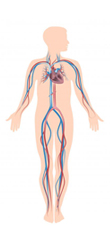
The significance of medical coding is enormous in the healthcare industry as it determines the amounts of reimbursements the healthcare provider gets for the services provided. For this reason, it is essential that the professionals in medical coding jobs have proficiency in all the required aspects of the healthcare industry and designate medical codes accurately. To be able to perform their job with accuracy, medical coders need to gain proficiency in not just basic medical terminology but also human anatomy. Good knowledge in human anatomy helps the coders assign exact diagnosis codes and procedure code. Also, understanding anatomy is greatly useful due to the fact that the main texts that are used by coders are arranged based on the anatomical systems. Here are some basics medical coders should know about human anatomy.
Musculoskeletal system: This system also known as the locomotor system gives the ability to move with the help of the skeletal and muscular systems. It consists of the bones, muscles, joints, connective tissues, etc. This system provides shape and form for a body, supports, and protection, and helps in the movement of the body. Usually, the procedure codes associated with this system are regarding fractures, casting, dislocated joints, etc.
Respiratory System: The respiratory system includes air passages, lungs, and breathing muscles that aid in supplying blood with oxygen to be delivered to all the parts of the body. Procedure codes related to this system are about the removal of foreign bodies from the nose and other surgical procedures.
Cardiovascular system: The heart, arteries, and veins constitute the cardiovascular system aiding in the distribution of oxygen, removal of waste products, and temperature control. Taking blood samples, heart transplants, and other procedures are covered by the various procedure codes for this system.
Digestive system: This system consisting of the gastrointestinal tract and other organs like the tongue, salivary glands, etc. helps in the breakdown of food into smaller components so that they can be absorbed by the body. Through this system, we can eat, digest and throw out food waste. Procedures related to stomach upset, and the repair of various organs in the system are covered by different diagnosis and procedure codes.
Urinary system: Kidneys, bladder, urethra, and ureter are the different organs that form the urinary system, working for the filtering of blood from impurities and controlling the salt and water quantity in the body. Urinary tract infections, bed-wetting, and kidney ailments are some common procedures that need to be assigned codes.
These are some of the systems that every medical coder should be aware of. There are a few other systems like the integumentary system, lymphatic system, reproductive system, nervous system, immune system and many other aspects of human anatomy that professionals in medical coding jobs need to master to boost their coding career because acquiring knowledge of human anatomy is one of the fundamental factors for a successful career.
